Tyson Foods to close major Nebraska beef plant amid cattle shortage - WSJ
Opal Fuels Inc (NASDAQ:OPAL) released its second quarter 2025 earnings presentation on August 8, 2025, revealing mixed results with strong renewable natural gas (RNG) production growth offset by lower profitability. The company's stock closed at $2.26 on August 7, down 4.24% ahead of the earnings release.
Quarterly Performance Highlights
Opal Fuels reported second quarter 2025 Adjusted EBITDA of $16.5 million, representing a 22% decrease compared to the same period in 2024. Despite this decline, the company achieved 33% year-over-year growth in RNG production, reaching 1.2 million MMBtu for the quarter. The Fuel Station Services segment showed strong performance with 30% EBITDA growth compared to Q2 2024.
As shown in the following summary of Q2 2025 results:
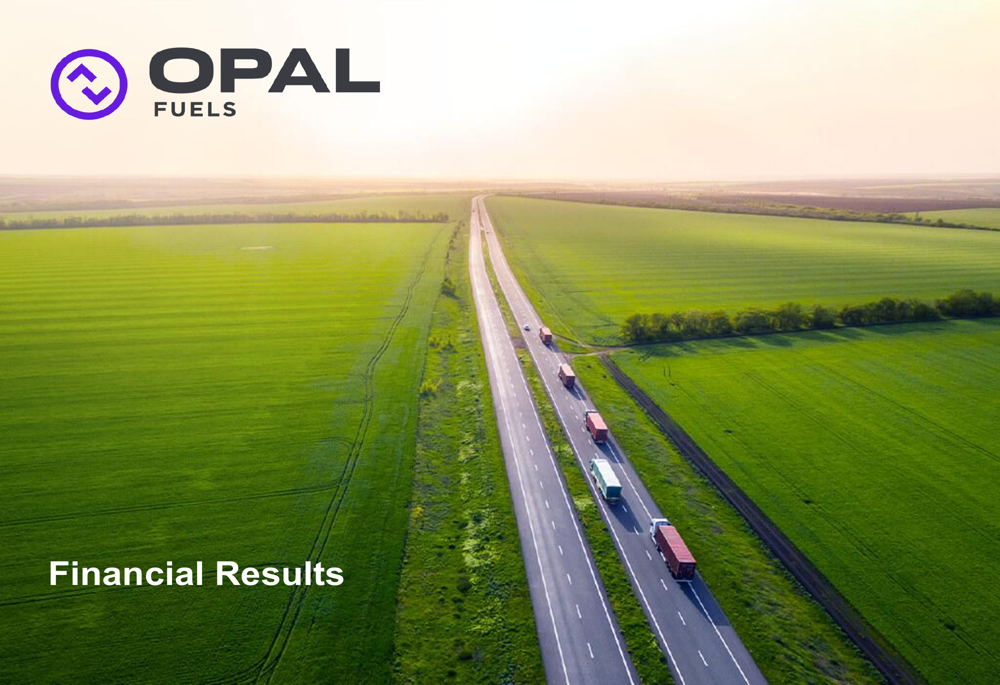
The company's performance was negatively impacted by several factors, including lower RIN prices, the loss of ISCC carbon credits, and non-recurring G&A expenses. The following waterfall chart illustrates the key drivers behind the year-over-year change in Adjusted EBITDA:
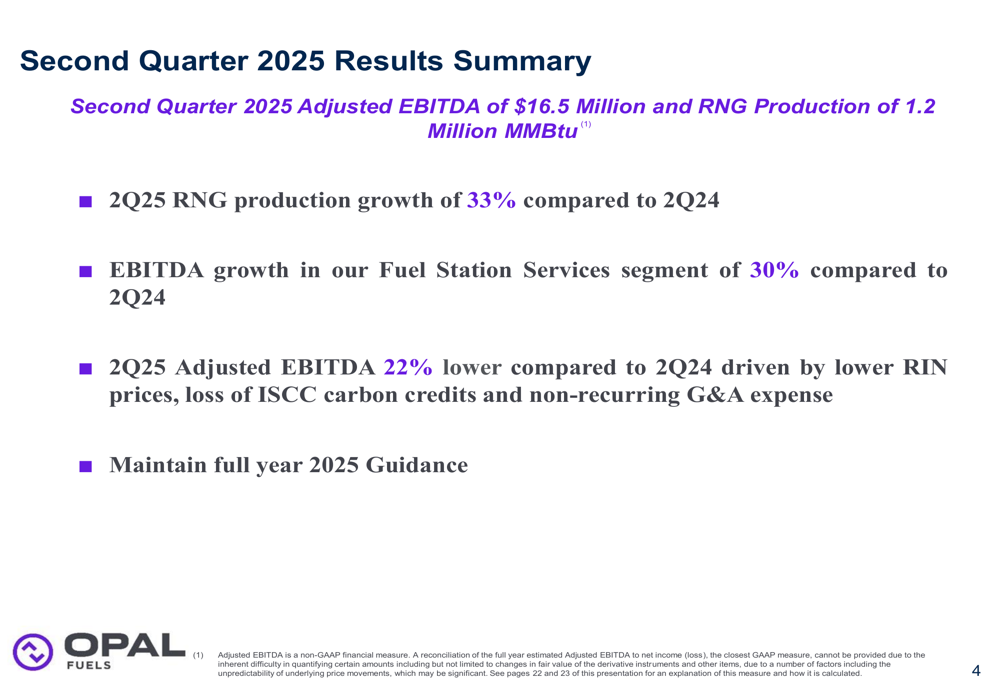
Lower realized RIN prices reduced Adjusted EBITDA by $3.9 million, while the termination of the ISCC carbon credit pathway in the Renewable Power segment resulted in a $3.8 million negative impact. Corporate expenses increased by $3.1 million due to compensation and partially non-recurring expenses. These negative factors were partially offset by positive contributions from RNG fuel growth ($3.6 million) and Fuel Station Services ($2.6 million).
Detailed Financial Analysis
Opal Fuels maintained a solid liquidity position of approximately $203 million as of June 30, 2025, consisting of $138 million in unused capacity under its $450 million credit facility, $36 million in unused capacity under the associated revolver, and $29 million in cash, cash equivalents, and short-term investments. The company's net debt stood at approximately $302 million.
The company's financial position is detailed in the following slide:
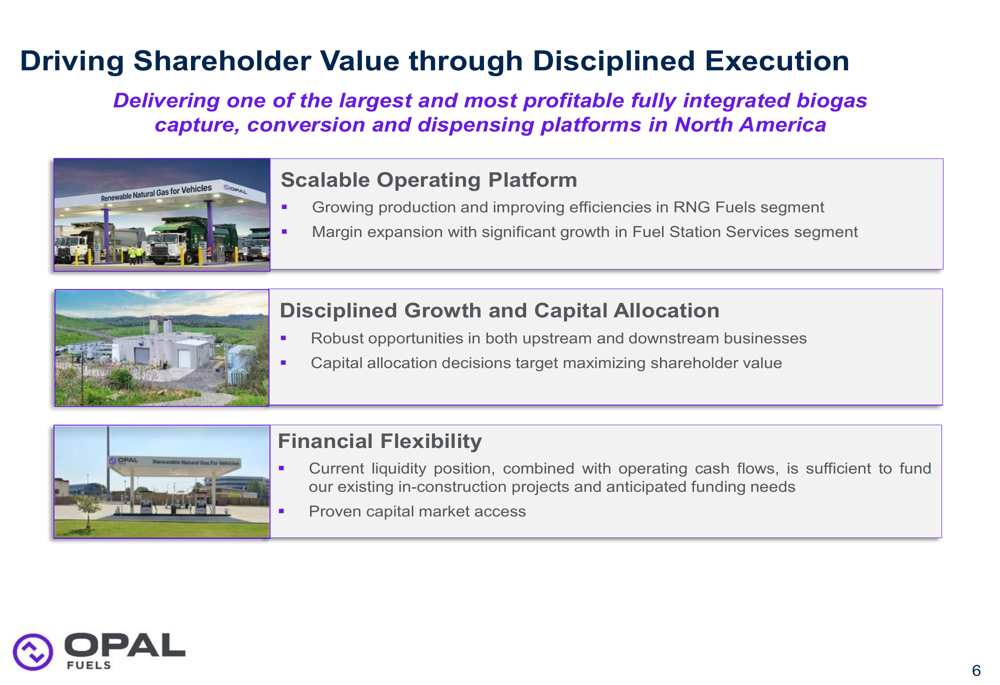
The RNG Projects' Utilization Summary showed improvement in inlet design capacity utilization, which increased to 76% in Q2 2025 from 74% in Q2 2024. However, utilization of inlet gas decreased to 75% in Q2 2025 from 82% in Q2 2024. For the six months ended June 30, 2025, RNG fuel volume produced increased to 2.2 million MMBtu from 1.7 million MMBtu in the same period of 2024.
This performance comes after a challenging first quarter, where Opal Fuels missed EPS expectations, reporting -$0.01 against a forecast of $0.09, according to the company's Q1 2025 earnings report. Despite these challenges, the company has maintained its full-year guidance.
Strategic Initiatives & Growth Projects
Opal Fuels continues to execute its vertically integrated business model, which spans from RNG capture and conversion to dispensing and monetization. The company's strategy is illustrated in the following diagram:
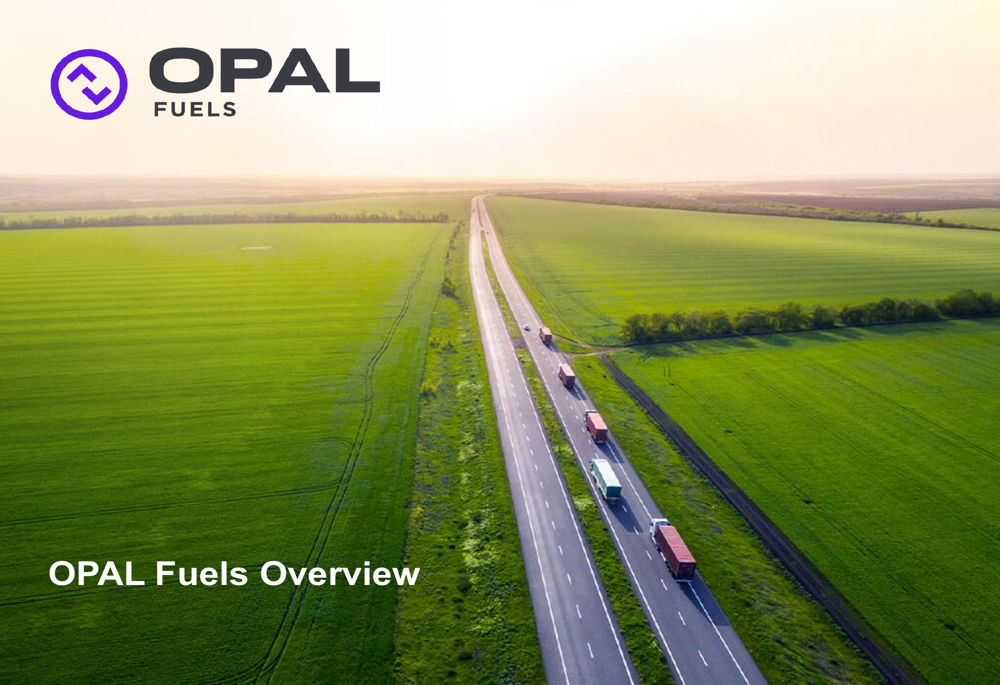
The company has demonstrated consistent growth in its RNG project capacity, with 9.1 million MMBtu of in-operation capacity and 2.3 million MMBtu in construction as of 2025. This represents significant growth from 2021, when the company had just 2.3 million MMBtu in operation.
The following chart shows the company's growth trajectory in RNG project capacity:
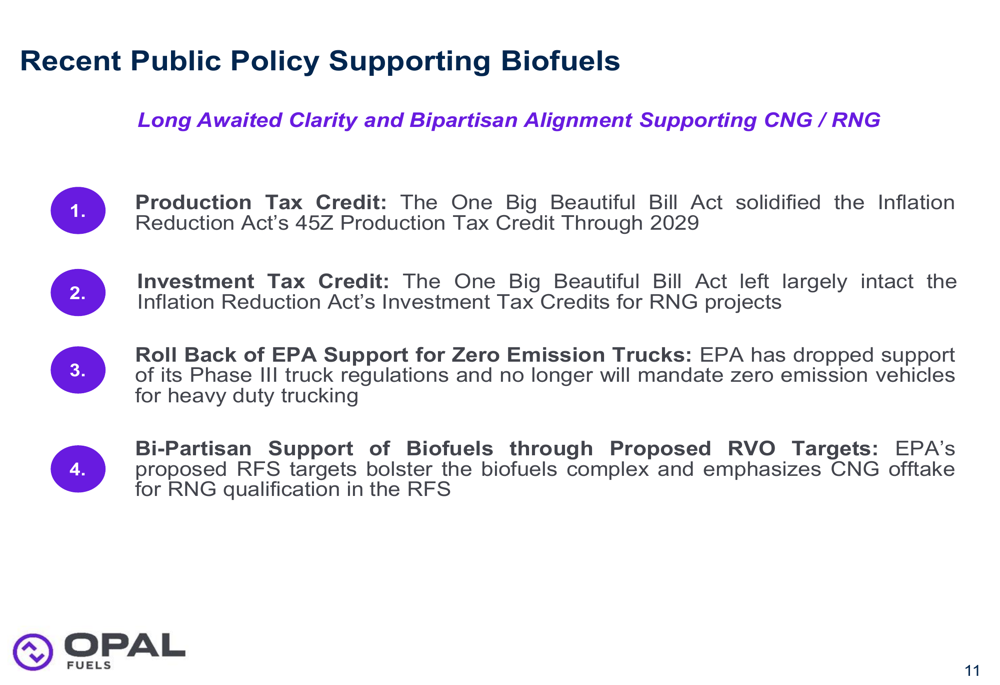
Currently, Opal Fuels has 11 RNG facilities online with a total design capacity of 8.8 million MMBtu. These facilities include 9 landfill-based projects and 2 dairy-based projects across various states:
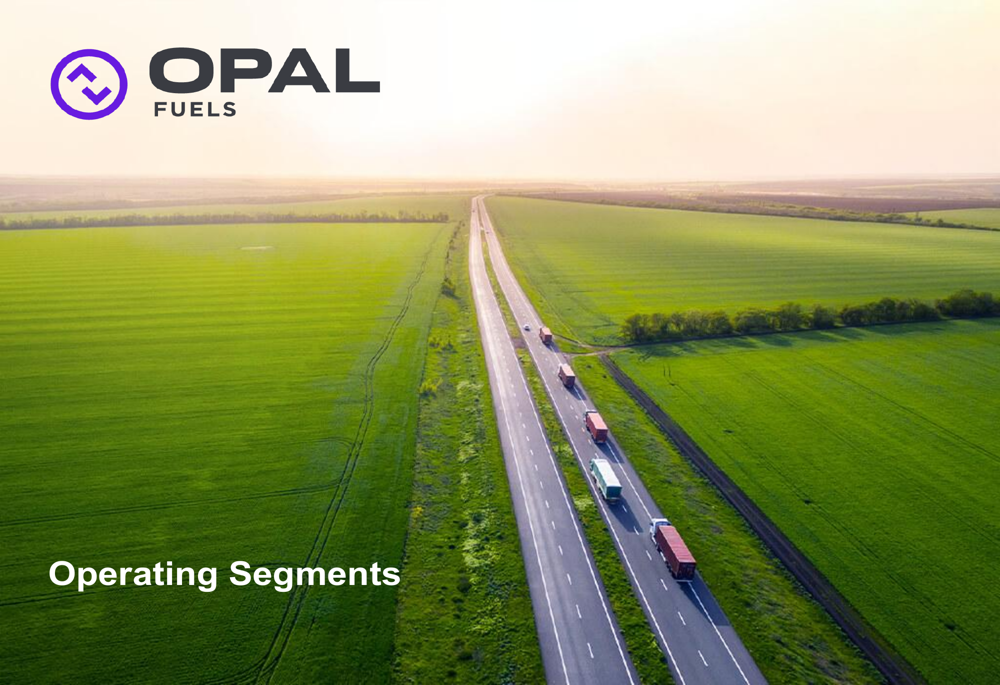
Additionally, the company has 4 landfill RNG projects in construction with a total capacity of 2.1 million MMBtu:
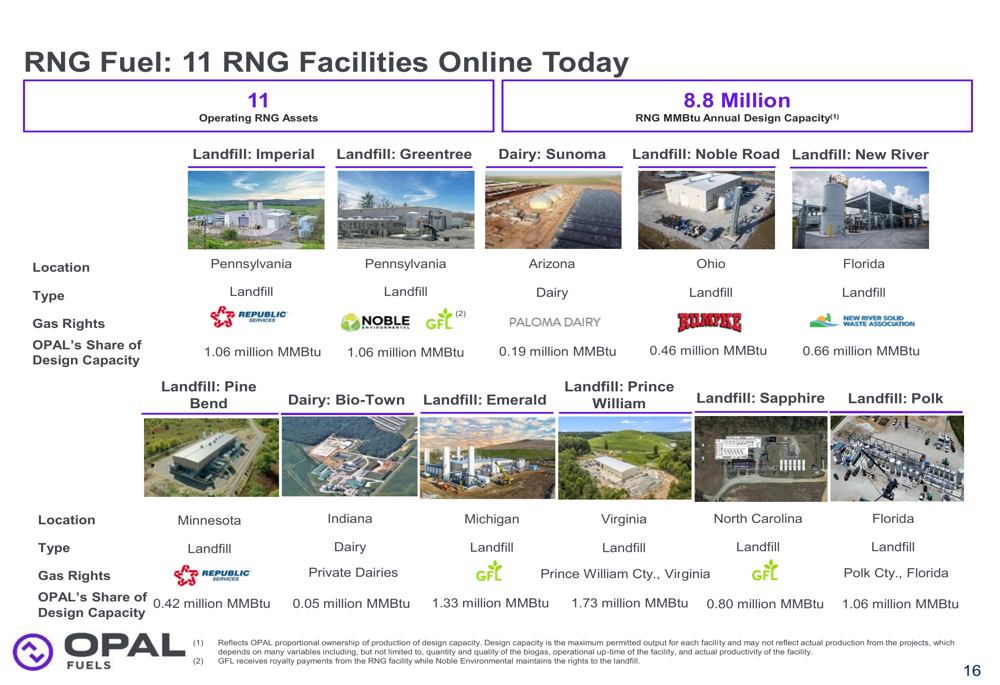
The Fuel Station Services segment has also shown consistent growth, with total volumes sold, dispensed, and serviced increasing from 96.4 million GGE in 2021 to 150.2 million GGE in 2024:
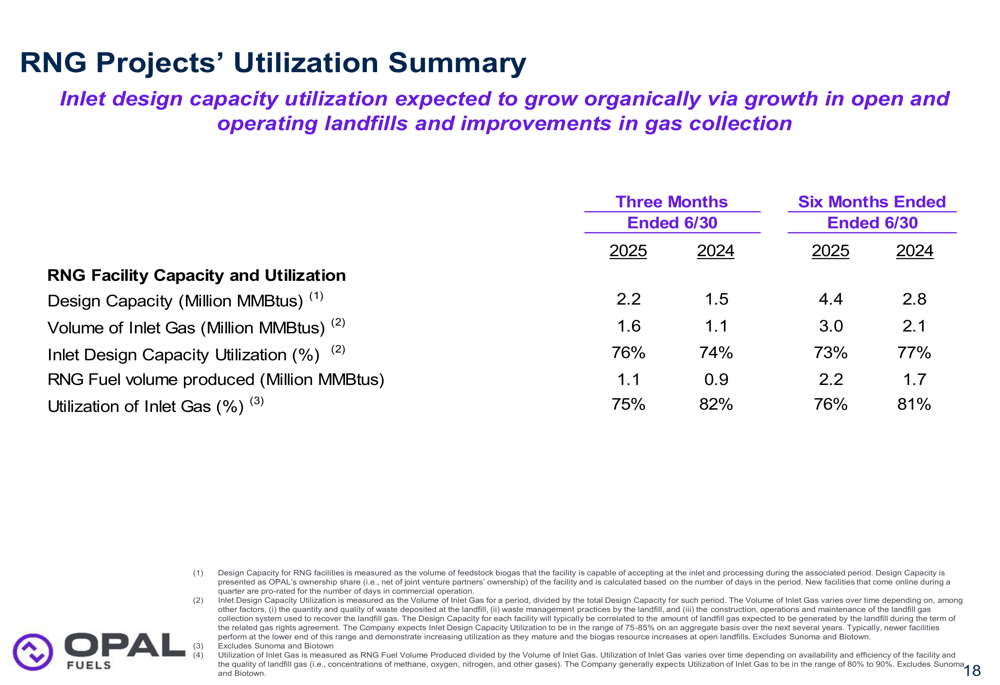
Competitive Positioning
Opal Fuels highlighted its inclusion in major indices, including the Russell 2000 Growth and Value Style Indexes, noting that less than 20% of Russell 3000 companies are included in both Growth and Value Style Indexes. The company also compared favorably to peers in terms of growth, with a 2022-2027 CAGR of 27% versus 4%, 12%, and 15% for its peers:
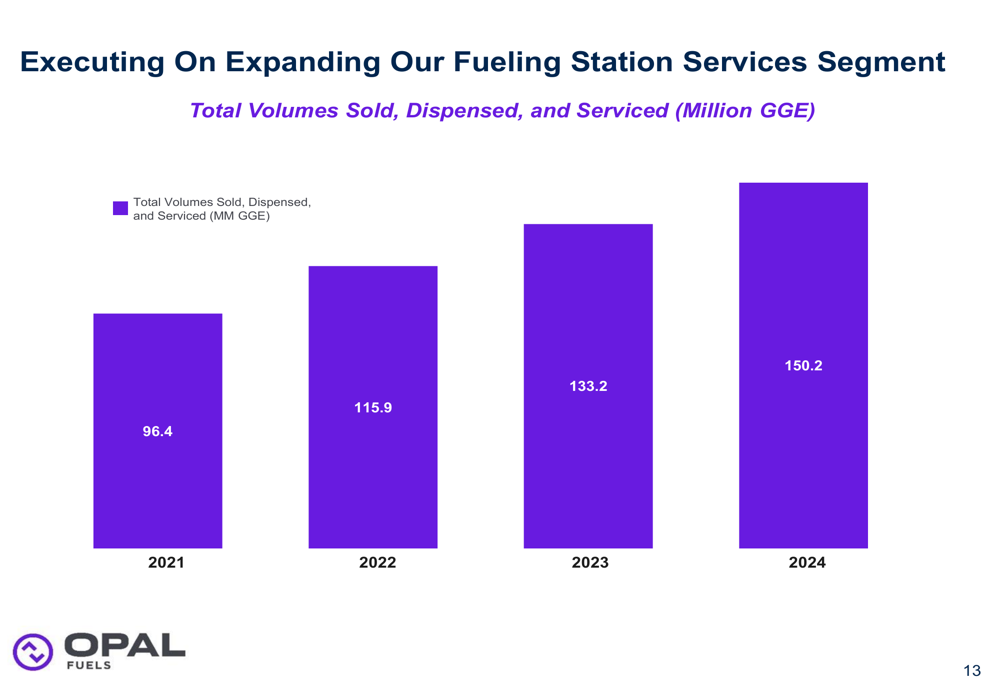
The company is benefiting from recent favorable public policies for biofuels, including the Inflation Reduction Act's Production Tax Credit and Investment Tax Credits for RNG projects. Additionally, the EPA's rollback of support for zero-emission trucks and bi-partisan support for biofuels through proposed RFS targets are creating a supportive regulatory environment.
Forward-Looking Statements
Despite the challenges in Q2 2025, Opal Fuels maintained its full-year 2025 guidance, projecting Adjusted EBITDA between $90 million and $110 million. This guidance assumes a $2.60/gallon D3 RIN price, with each $0.10/gallon shift in D3 RIN price impacting 2025 Adjusted EBITDA by $5-$6 million.
The company's 2025 guidance is detailed in the following slide:
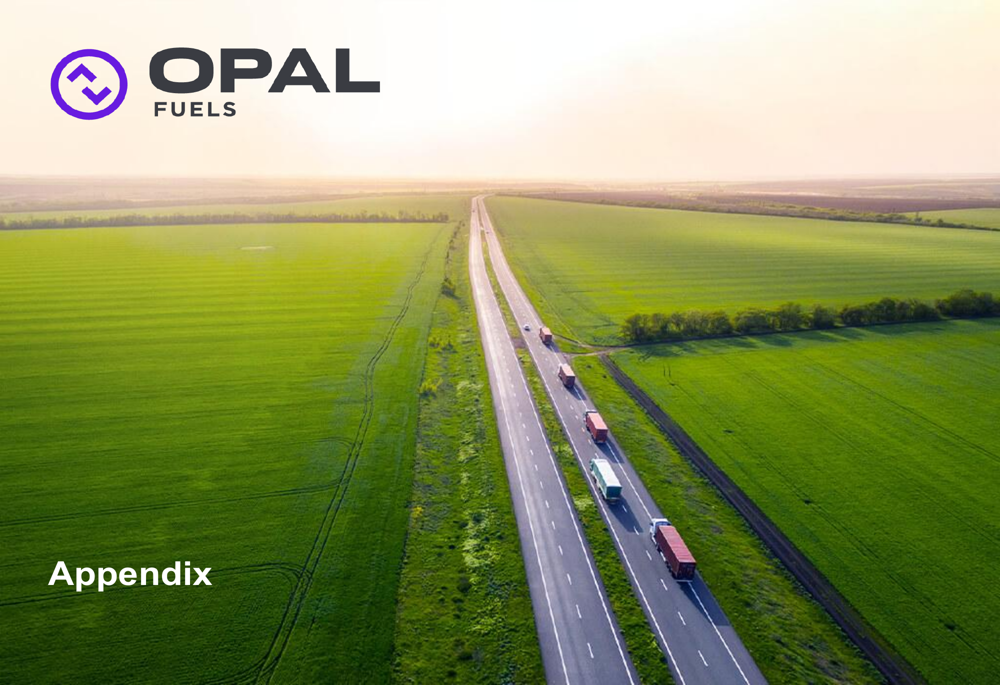
Opal Fuels expects RNG production to range between 5.0 and 5.4 million MMBtu for the full year 2025. The Fuel Station Services segment is projected to grow by 30% to 50% compared to 2024. The company also anticipates putting approximately 2.0 million annual MMBtu of RNG design capacity into construction in 2025.
Notably, the 2025 Adjusted EBITDA guidance does not include approximately $50 million from the sale of Investment Tax Credits ( ITC (NSE:ITC)) from recent RNG projects, which would be included in operating cash flow and net income.
As Opal Fuels navigates the challenges of fluctuating RIN prices and the loss of carbon credits, its focus on expanding RNG production capacity and growing its Fuel Station Services segment positions the company to potentially deliver on its full-year guidance, despite the headwinds experienced in the first half of 2025.
Full presentation:
This article was generated with the support of AI and reviewed by an editor. For more information see our T&C.
